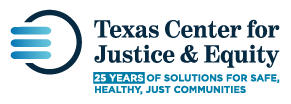Policy Background
Texas spends $50 million per year on the Substance Abuse Felony Punishment Facility (SAFPF) program,1 created by the Legislature in the 1990s to provide an intensive in-prison therapeutic community for people at risk of probation or parole revocation due to repeated drug or alcohol use.2
The program has not been thoroughly evaluated by the Texas Sunset Commission or any other independent entity in almost two decades.3 In the most recent evaluation by the Texas Department of Criminal Justice (TDCJ), which operates SAFPF programs, the only reductions in recidivism were experienced by those who completed the aftercare component — accounting for approximately one-third of overall participants.4
Per the findings of the two above-mentioned evaluations:
- The curriculum for SAFPF programs is not published; therefore, it is unclear if the program meets statutory requirements.
- SAFPF is the “largest, most intensive, and most expensive” program that TDCJ offers for substance abuse treatment.5
- As of 2001, only 44 percent of initial SAFPF participants had completed the program,6 and that completion rate dropped to 39 percent by 2011.7
Other reports have found additional concerns:
- SAFPF has the highest percentage of individuals who are re-incarcerated within three years of release compared to the felony community supervision, prison, state jail, In-prison Therapeutic Community, Intermediate Sanction Facility, and parole supervision programs.8
- Despite these numbers, in 2007, the 80th Texas Legislature added 1,500 beds to the SAFPF program.9
The SAFPF model’s limitations are not unique to Texas. Research on similar programs in other states has found problems with noncompletion and program mismatch.10 To be effective, these programs must be aimed at those in the highest-risk classification, and every effort should be taken to ensure that program participants complete all phases of the program, including aftercare. In Texas, courts may place individuals in SAFPF as part of a plea agreement or when other treatment programs are not available. Unfortunately, this ensures that people not appropriate for SAFPF are placed in the program anyway; and, TDCJ cannot reject anyone placed in these programs, even if participants do not meet the ideal criteria.
Proposed Solution
More than 6,000 people are sent to SAFPF programs every year.11 To safely and significantly lower that number, correspondingly reduce taxpayer waste, and help people get effective rehabilitative support, Texas leadership should:
1. Require plea agreements to include that participation in SAFPF programs must be the best fit for an individual based on a risk and needs assessment.
2. Allow the Texas Department of Criminal Justice to reject individuals who do not meet the program criteria or who could be better served through alternative programs available to probation and parole departments.
3. Reduce the number of SAFPF beds and shift the savings into additional treatment options in the community, including dual-diagnosis programs at community correctional facilities, virtual outpatient programs for defendants in rural areas, or placement in Oxford Housing.
Relevant Bills
- Bill Number: HB 2791 [Jarvis Johnson]
Bill Caption: Relating to confinement and treatment in a substance abuse felony punishment facility under a plea bargain agreement.
TCJE Materials: Fact Sheet
- Bill Number: HB 4102 [Jarvis Johnson]
Bill Caption: Relating to certain substance abuse treatment programs operated by the Texas Department of Criminal Justice.
TCJE Materials: Fact Sheet
Other Materials
- TCJE Report: Layers of Trauma, Layers of Treatment: Using Participant Experiences to Reform Texas’ In-Prison Substance Use Treatment Program [April 2021]
In light of Texas’ projected budget crisis, TCJE developed 7 cost-saving solutions. Learn more about our ”Spend Your Values, Cut Your Losses" campaign here, and read the full portfolio of solutions here.
1 General Appropriations Act, FY 2020–2021, Department of Criminal Justice, Strategy C.2.4.
2 Texas Government Code §493.009, 1991.
3 “The Substance Abuse Felony Punishment Program (SAFP): Evaluation and Recommendations,” Criminal Justice Policy Council (CJPC), 2001, i.
4 “Evaluation of Offenders Released in Fiscal Year 2011 That Completed Rehabilitation Tier Programs,” TDCJ, April 2015, 14.
5 “SAFP: Evaluation and Recommendations,” 2001, i.
6 “SAFP: Evaluation and Recommendations,” 2001, 2.
7 “Evaluation of Offenders,” 14.
8 “Statewide Criminal and Juvenile Justice Recidivism and Revocation Rates,” LBB, January 2019, 4.
9 “Expanded Community Supervision Residential Alternatives,” TDCJ – Community Justice Assistance Division (TDCJ – CJAD), 2008.
10 James Griffin et al., “A Cost Effectiveness Analysis of In-Prison Therapeutic Community Treatment and Risk Classification,” The Prison Journal, Vol. 79, No. 3, 1999, 352–368.
11 “FY 2018 Statistical Report,” TDCJ.

